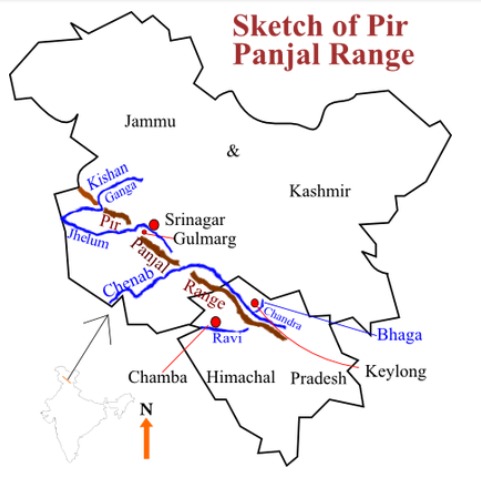Prelims Booster
1. Additional Tier-1 (AT-1) Bonds:
- AT-1 bonds are perpetual bonds with no maturity date.
- Investors in these bonds do not get their principal back.
- However, the interest continues forever. AT-1 bonds have a higher interest rate than other bonds.
- Due to the perpetual nature of AT-1 bonds, these are often treated and viewed as equity, not debt.
- How are AT-1 Bonds Issued?
-
- AT-1 bonds are issued by banks in accordance with the directions of the Reserve Bank of India (RBI).
- Financial institutions usually issue such bonds to fulfil their capital adequacy requirements (CAR).
- CAR is an assessment of a bank’s capital and its risk-weighted assets.
- Capital adequacy norms were formulated under the Basel III accord of 2009 after the credit crisis of 2008.
- The money raised through these bonds is kept aside as a shock absorber by the bank.
- These bonds are contingent convertible bonds (CoCos), a type of debt instrument that the bank can convert into equity if its capital levels fall below the specified levels. This helps the bank reduce debt while managing capital.
- AT-1 bonds have a call option, which allows the banks to buy back the bonds from the investors.
- These bonds provide high returns but also carry greater risk.
- If the banking institution fails, these bonds are at risk.
- Suppose the RBI finds a bank in an unstable condition, under pressure, and in a situation where it demands rescue. In that case, it can ask the bank to immediately withdraw their AT-1 Bonds without seeking permission from the investors, therefore making AT-1 Bonds risky.
- Further, the issuer can also skip the interest payout if it is under financial stress.
- Investors cannot return their bonds to the bank as there is no put option against these bonds. However, these bonds are listed on the stock exchanges, so the investor can liquidate them whenever needed.
- Subordinate debt: In case of default, these bonds rank lower than the other debt, which is why these are subordinate debts.
2. North Atlantic right whales:
- These whales are migratory animals, spending the winter in warmer waters and migrating to the poles for cooler waters in late summer.
- These whales inhabit the temperate and subpolar waters of the North Atlantic and North Pacific oceans.
- Habitat: Depending on the time of year and which hemisphere they’re found, right whales will spend much of their time near bays and peninsulas and in shallow, coastal waters.
- Distribution: These are generally restricted to the coastal waters of the East Coast of the United States and Canada.
- There are three recognized species of right whales that occur in different parts of the world. These are Southern right whales (Eubalaena australis), North Atlantic right whales (Eubalaena glacialis) and North Pacific right whales.
- These whales often skim feed at or just below the water surface, slowly swimming through clouds of plankton with their mouths half open and then straining the plankton through their long baleen plates.
- Conservation status
-
- IUCN: Critically endangered
- CITES: Appendix I
3. Africa Club:
- What it is? It is the Alliance of African Multilateral Financial Institutions (which are African-owned and controlled) launched at the African Union summit.
- The initiative aims to amplify Africa’s influence in the global financial system by aligning its functions with the SDGs and the African Union’s Agenda 2063.
- It seeks to introduce innovative financial instruments, provide a venue for debt management discussions and foster collaborative efforts to address the specific needs of African countries.
- Its members include the African Export-Import Bank, Trade and Development Bank, Africa Finance Corporation, African Reinsurance Corporation, African Trade and Investment Development Insurance, Shelter Afrique Development Bank and ZEP – RE (PTA Reinsurance Co).
Key facts about the African Union:
- The AU is an intergovernmental organization consisting of the 55 member states that make up the countries of the African Continent.
- Basically, it is a continental union with a wide range of goals aimed at strengthening its member states both individually and collectively.
- It was officially launched in 2002 as a successor to the Organisation of African Unity (OAU, 1963-1999).
- Headquarters: Addis Ababa, Ethiopia.
Places In News
1. Pir Panjal Valley:
- The Pir Panjal is a sub-Range of Himalayas and it runs from the Neelam River in J&K all the way to the Beas River in Kullu in Himachal Pradesh extending into Pakistan.
- It is a collection of mountains in the Lesser Himalayan region.
- It separates itself from the Himalayas near the bank of the Sutlej river and forms a divide between the rivers Beas and Ravi on one side and the Chenab on the other
- Major passes: Six historical passes, Hajipir Pass, Gulabgarh Pass, Ratanpir Pass, Pir Panjal Pass, Banihal Pass, and Bairam Gala Pass are in this mountain range
- Important peaks: Deo Tibba (6,001 m) and Indrasan (6,221m) are two important peaks at the eastern end of the mountain range.

